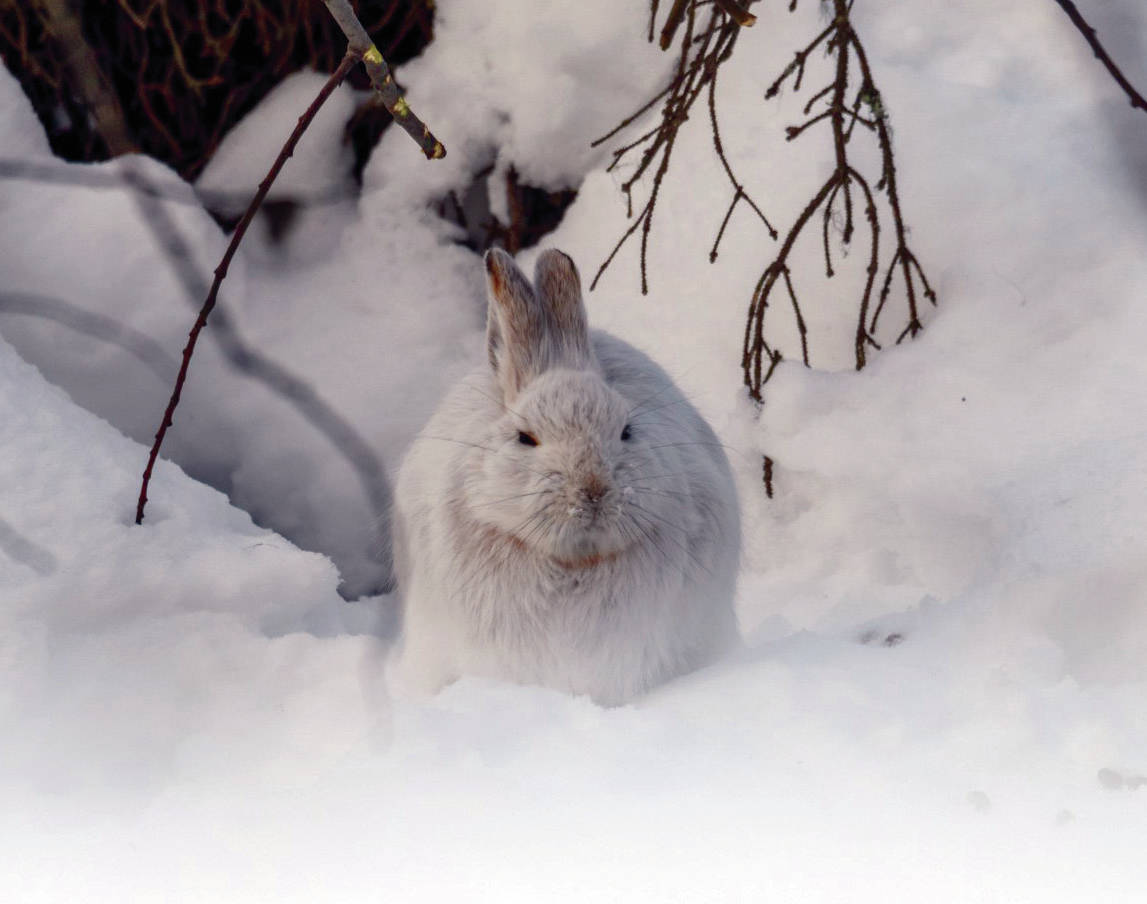As the daylight hours seem to slip away, the temperatures are slowly getting lower and the silky flowing waters of rivers, lakes and streams begin to shut themselves off to the world while the impending snow cover inches ever so closer.
As this annual process unfolds, it seems our to-do lists rarely get any shorter, nor do we ever seem to accomplish all that we want before it’s too late, time is up, and our only option is to wait it out. Hopefully before then, we are able to at least do a few things like fill our freezers and pantries, do the seasonal gear changeover, and cut and pile firewood to heat our homes.
A simple observation of the natural world around us at this time of year will show we aren’t the only ones preparing to beat the incoming winter.
Since late spring and early summer, most people around the state, including those of us on the Kenai Peninsula, have been hunting, fishing and gathering to ready ourselves for the winter ahead.
As salmon runs go by; mushrooms, berries and gardens bloom and wilt; and moose, bears and grouse come and go, we’re out there collecting and storing away — cutting, packaging, jarring, freezing and drying — to last us until next summer.
A wide variety of wildlife do the equivalent here on the Kenai National Wildlife Refuge.
Beavers, for example, will build a cache next to the gigantic pile of logs, branches and mud we call a lodge. Usually around late summer, the beaver will start to focus on building up a store of food, gathering bark, twigs and branches of aspen, alder, birch, cottonwood, willow and other deciduous trees to create its cache.
Without knowing what it is, someone might mistake it for a slash pile in the water, but once the ice freezes around it, the beavers are able to access their food cache from the bottom of the pile without the danger of predators.
Just like how we shuffle in the boxes of coats, hats and gloves to prepare for the cold, critters all across Alaska are growing in dense winter coats.
With the snowshoe hare population on the rise again, this time of year, their seasonal polyphenism is evident. Polyphenism is the multiple, discrete physical traits that can arise from a single individual as a result of differing environmental conditions.
This change is induced by the decreasing hours of sunlight that trigger hormones to decrease melatonin and stimulate follicle growth. The patchy mottled brown and white hares along the roads and in the woods will soon become solid white with a thick, fluffy coat of fur.
Alaska is home to many species that insulate and camouflage themselves in this manner. On the Kenai refuge there are short-tailed weasels and three species of ptarmigan: rock, willow, and white-tailed. In other parts of Alaska there are the Arctic foxes and collared lemmings.
A couple fun facts: Although polar bears have white fur year-round, they have black skin to help absorb as much UV warmth as possible. Also, according to the Guinness Book of World Records, sea otters have the densest fur of any animal in the world (650,000 to 2.6 million hairs per square inch).
This time of year, Alaskans spend countless hours working toward heating our homes to stay warm, cutting and stacking firewood, storing up heating oil, or even just paying the electric bill. To keep warm through the long, cold months, critters are also working hard to build up fat stores.
Unfortunately, this wildlife winter strategy of getting chubby is a little too familiar for me. As a seasonal biological science technician working on the Kenai National Wildlife Refuge, the fieldwork of summer finishes and my task load slows down and becomes focused on the things that need caught up on from when the season was at full throttle.
Now it’s on to desk work like tackling that mountain of datasheets to be entered, or the list of training courses to be completed. With the change, my physical activity level in general inevitably wanes as well.
Much like a bear entering hibernation, this time of year I put on a few pounds wanting nothing more than to cozy up with a movie or a good book, lazily watching the snow pile up while curled up in a thick blanket, sipping on something warm, napping the day away.
A hibernating bear probably won’t get much reading done, but in order to prepare to stay warm for a long winter’s nap, they do pack on the poundage from entering a state of hyperphagia, which is an abnormally strong sensation of hunger.
With that kind of heightened appetite, an adult brown/grizzly bear can double its weight before hibernation. This, coupled with an underground den just large enough for it to fit in, will keep the bear toasty for many months.
For us humans, this is rarely how the winter days and nights play out as people have kids that need attending to, incomes that need to be made, something that needs to be shoveled out, and all the things in life that keep us busy.
But, as you check things off of your to-do list this late fall/early winter, and things eventually begin to wind down, I hope that, just like the wildlife here on the refuge, this winter you will have plenty of food, warm clothes to wear, and a cozy house to call home.
Jake Danner serves as a Biological Science Technician at Kenai National Wildlife Refuge. Find more Refuge Notebook articles (1999–present) at https://www.fws.gov/refuge/Kenai/community/refuge_notebook.html.

